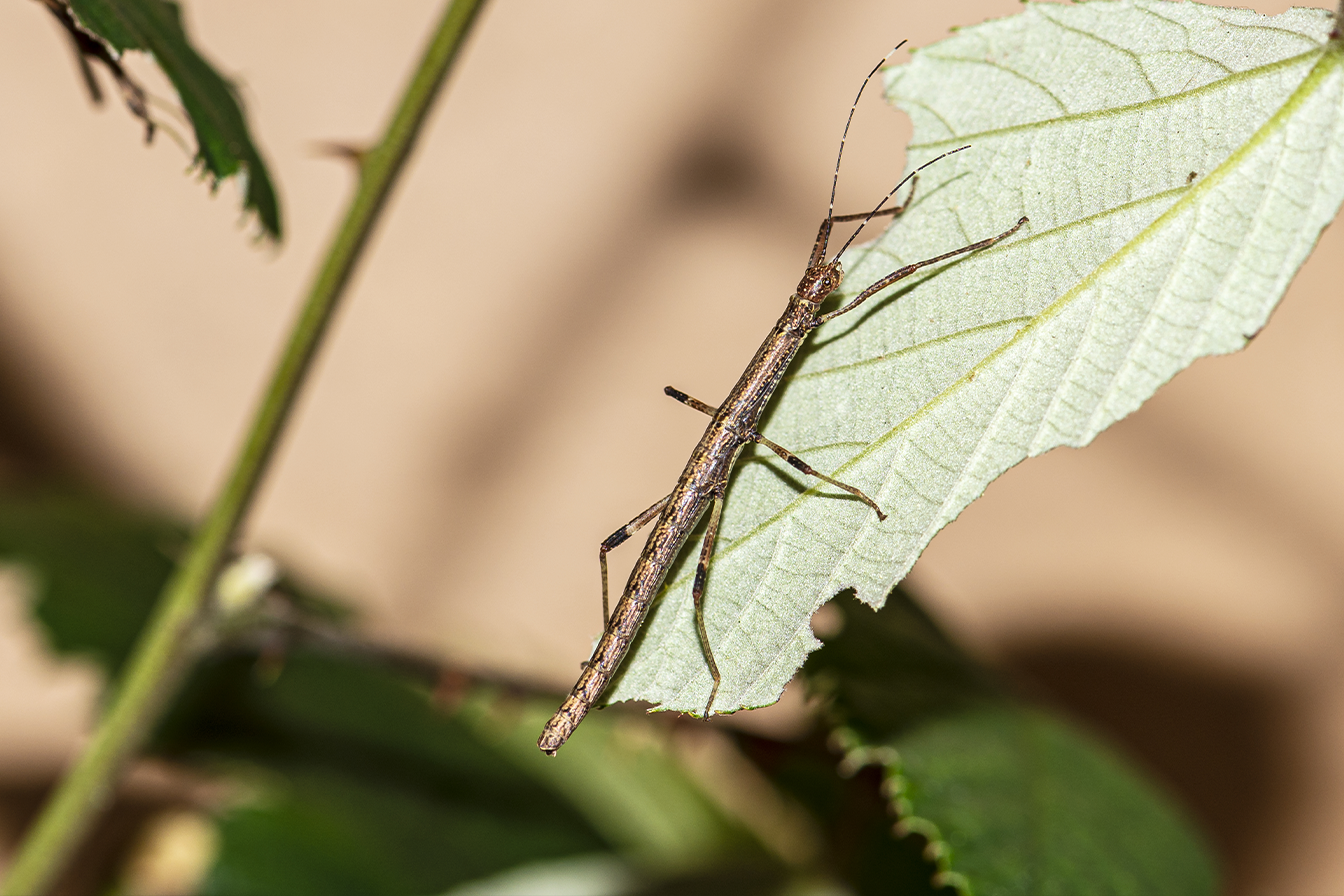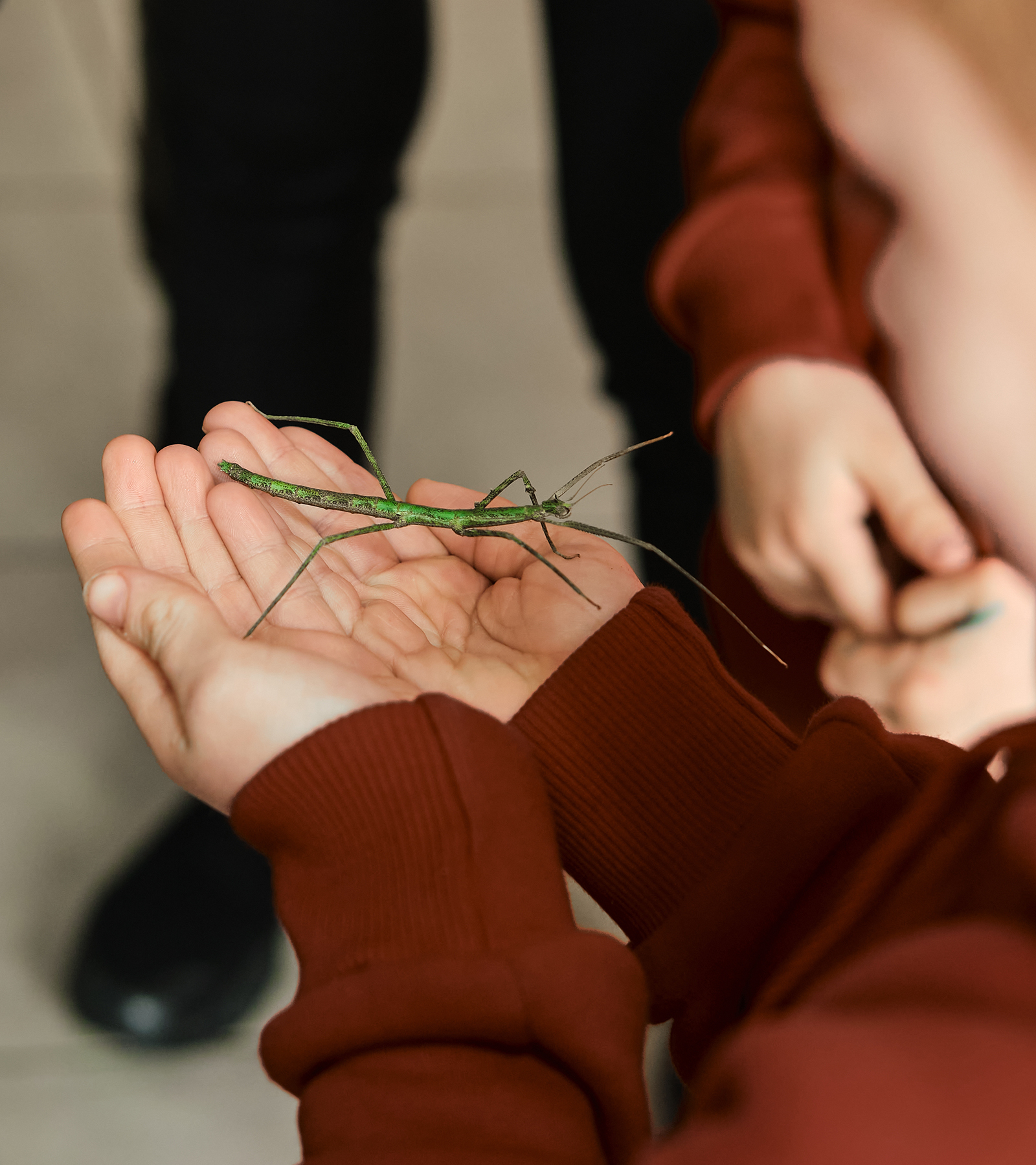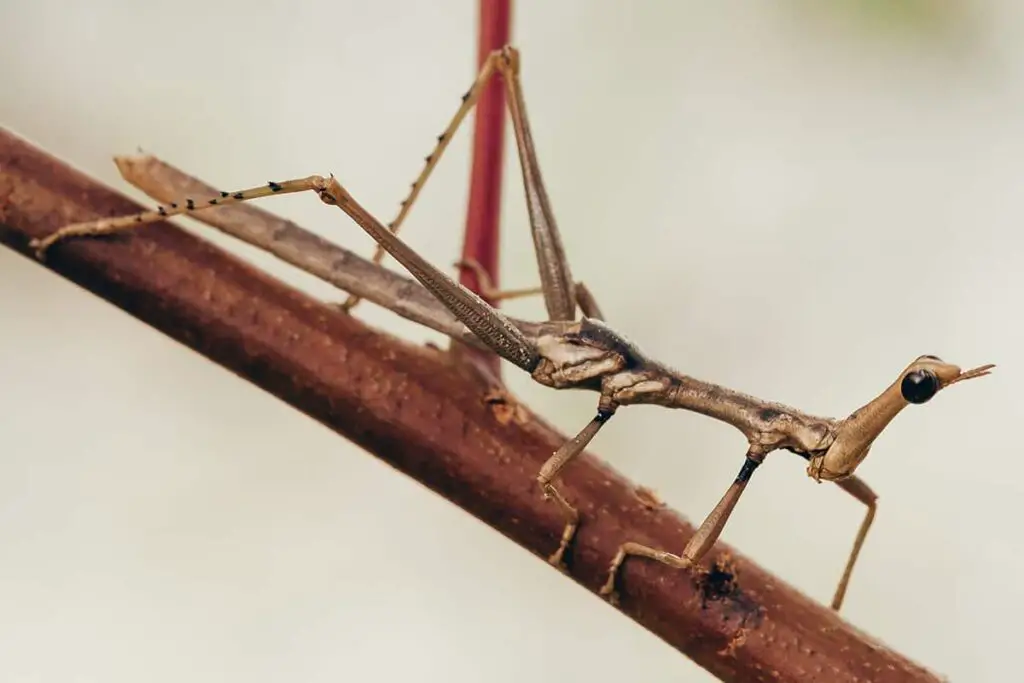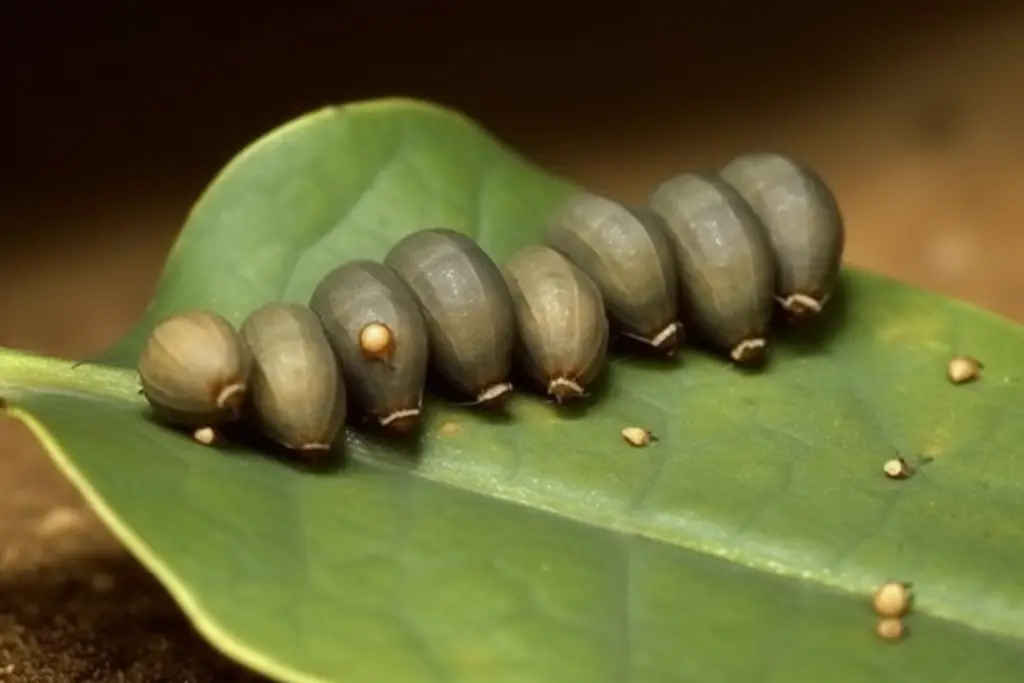
I can’t help but marvel at the incredible camouflage abilities of the walking stick. Seamlessly blending into their surroundings to escape predation, they can be near invisible to all but the sharpest eyes. As I pondered this fascinating defense mechanism, it got me thinking about other ways insects avoid predators. Could walking sticks also be poisonous?
Most species of walking stick insects are harmless. Nevertheless, there are some species in the southeastern United States that have the ability to spray a defensive venom when they feel threatened. This venom, while not necessarily “poisonous” in the traditional sense, can cause chemically induced corneal ulcers and even temporary blindness if it comes into contact with humans or other animals.
It’s important to remember that while walking sticks are fascinating creatures and the majority are entirely harmless, some species do possess a unique defense mechanism that should be treated with caution.
Understanding Walking Sticks
Walking sticks are masters of camouflage, closely resembling twigs or branches to avoid predators. While they are not venomous, some do have some interesting defense mechanisms when threatened. Let’s dive into the details of their physical characteristics, habitat, and behaviors.
Physical Characteristics
Walking sticks, also known as stick insects, possess body structures and coloration that mimic real twigs or branches, helping them blend into their surroundings (Sciencing). Many of their species can regenerate limbs, using a special muscle to break off their leg at a weak joint in a defensive strategy known as autotomy (ThoughtCo). If their camouflage fails, some species even emit a foul-smelling fluid or even regurgitate substances to deter predators.
Habitat
Walking sticks thrive in various habitats, including forests, grasslands, and even deserts. They tend to inhabit areas with plenty of vegetation, which not only provides them with food but also allows them to blend in effectively with foliage (National Wildlife Federation). The more visual noise in the environment, the more they blend in.
Behavior
Walking sticks use their camouflage to escape predation, sometimes even swaying back and forth to more closely resemble a twig moving in the wind (National Wildlife Federation). If threatened, they may employ various defense mechanisms, such as ejecting a toxic spray from their glands to deter predators like birds, reptiles, and spiders (Nature’s Poisons). Interestingly, they can also regenerate lost limbs, allowing them to continue living and thriving even after encounters with predators.
Are Walking Sticks Poisonous?
Toxicity to Humans
While I initially thought that walking sticks were merely harmless creatures, it turns out that some species actually can pose a threat to humans. In the southeastern United States, there are species of walking sticks that are capable of spraying defensive venom when they feel threatened. This venom can cause chemically-induced corneal ulcers, also known as burns, and even temporary blindness in extreme cases (Wise-Answer).

Toxicity to Animals and Predators
Walking sticks in general are not venomous, so their danger to animals and predators is relatively low. However, when they feel threatened, they have a range of defense mechanisms to protect themselves. Some walking sticks will regurgitate a bitter-tasting substance to deter predators from eating them (The Faithful Dog). Others can release a foul-smelling hemolymph from their joints to repel attackers.
When camouflage isn’t sufficient, some walking stick species have evolved to release unpleasant chemicals to deter predators. Others can secrete a liquid that temporarily blinds their foes . These defense mechanisms help ensure their survival in the wild.
I haven’t found any evidence suggesting that walking sticks pose a significant threat to animals or predators. As long as humans and animals respect their space and do not injure or provoke them, walking sticks remain peaceful creatures.
Defense Mechanisms
Camouflage
Camouflage is a walking sticks primary method of self-preservation. Their body structure and coloration closely resemble real twigs or branches, which helps them hide from predators like birds. This is often so effective that predators don’t even notice them at all.
Spraying Substances
While most walking sticks rely on hiding and escaping as their primary defense mechanisms, there are some species that can spray acidic chemicals at predators. For example, the Anisomorpha buprestoides can cause discomfort or even short-term blindness if its chemical comes into contact with the eyes (Animal Knowledge). Another species, Eurycantha horrida, is known to expel a foul-smelling fluid as a defensive tactic. Living up to its name, I guess!
Regenerating Limbs
Another fascinating defense mechanism I discovered is that some walking sticks can shed their limbs as an escape strategy. This adaptation, called autotomy, is most common in long-legged insects like walking sticks, craneflies, and katydids. If the loss of a limb occurs when the walking stick is young, it may even regenerate the limb over the course of several molts.
Safety Precautions
First Aid
Some species of walking stick, such as the Southern Walkingstick, can eject a noxious chemical spray. If this spray comes in contact with the eyes, it may cause temporary discomfort, irritation or even blindness. In case of accidental exposure, I would recommend the following first aid measures:
- Immediately flush the affected eye with copious amounts of water or saline solution for at least 15 minutes. Make sure not to rub or press the eye, as this may worsen the situation.
- Consult a physician, especially if irritation or pain persists after washing the eye.
- If the spray comes in contact with the skin, wash the affected area with soap and water to prevent irritation.
Avoiding Contact
In order to minimize the risk of coming in contact with a poisonous walking stick, I would suggest the following precautions:
- Be cautious and observant when exploring nature, particularly in areas where walking sticks are known to inhabit. Remember, they are well-camouflaged, so be extra careful when handling twigs and branches.
- If you see a walking stick, avoid touching it or getting too close. Observe it from a distance to minimize the risk of being sprayed.
- When collecting firewood or pruning trees, wear protective gloves and eyewear to reduce the likelihood of accidental exposure.
- Educate yourself about the different species of walking sticks found in your region, as only some of them are poisonous. This will help you identify potentially harmful individuals.
By following these safety precautions, you can minimize the risk of experiencing any harm from a poisonous walking stick while still enjoying the beauty of nature.
Conclusion
Walking sticks are not poisonous to humans. They are primarily herbivores, which means they feed on leaves and plants rather than other insects or animals.
Although walking sticks are generally harmless, some species can emit a defensive spray when threatened. For example, the American stick insect can release an acidic compound from glands on the back of its thorax, which may cause skin irritation or blistering in some individuals.
It is also worth noting that walking sticks are also not toxic to dogs. They rely heavily on their camouflage abilities to protect themselves from predators, but they do not pose a threat through biting, stinging, or any other form of physical harm.
In summary, walking sticks are not poisonous, and they don’t pose any significant danger to humans or pets. They are fascinating creatures with a unique appearance that allows them to blend in with their surroundings. If you come across a walking stick, simply observe it from a distance and enjoy the beauty of nature at work. That’s if you can spot them, of course!
Driven by a passion for those tiny creatures that rule our world, we at Bug Domain strive to be your go-to resource for information on insects.



